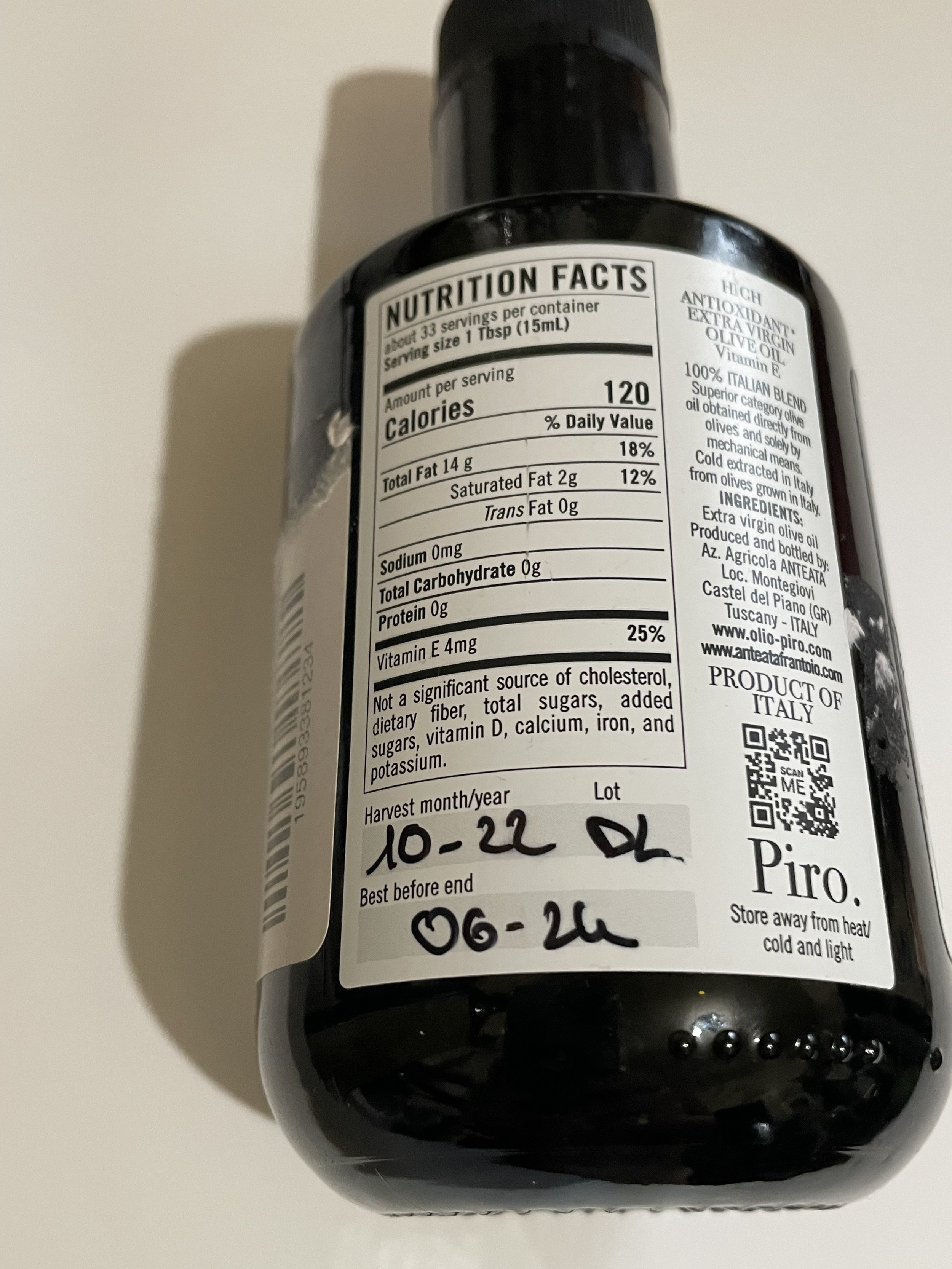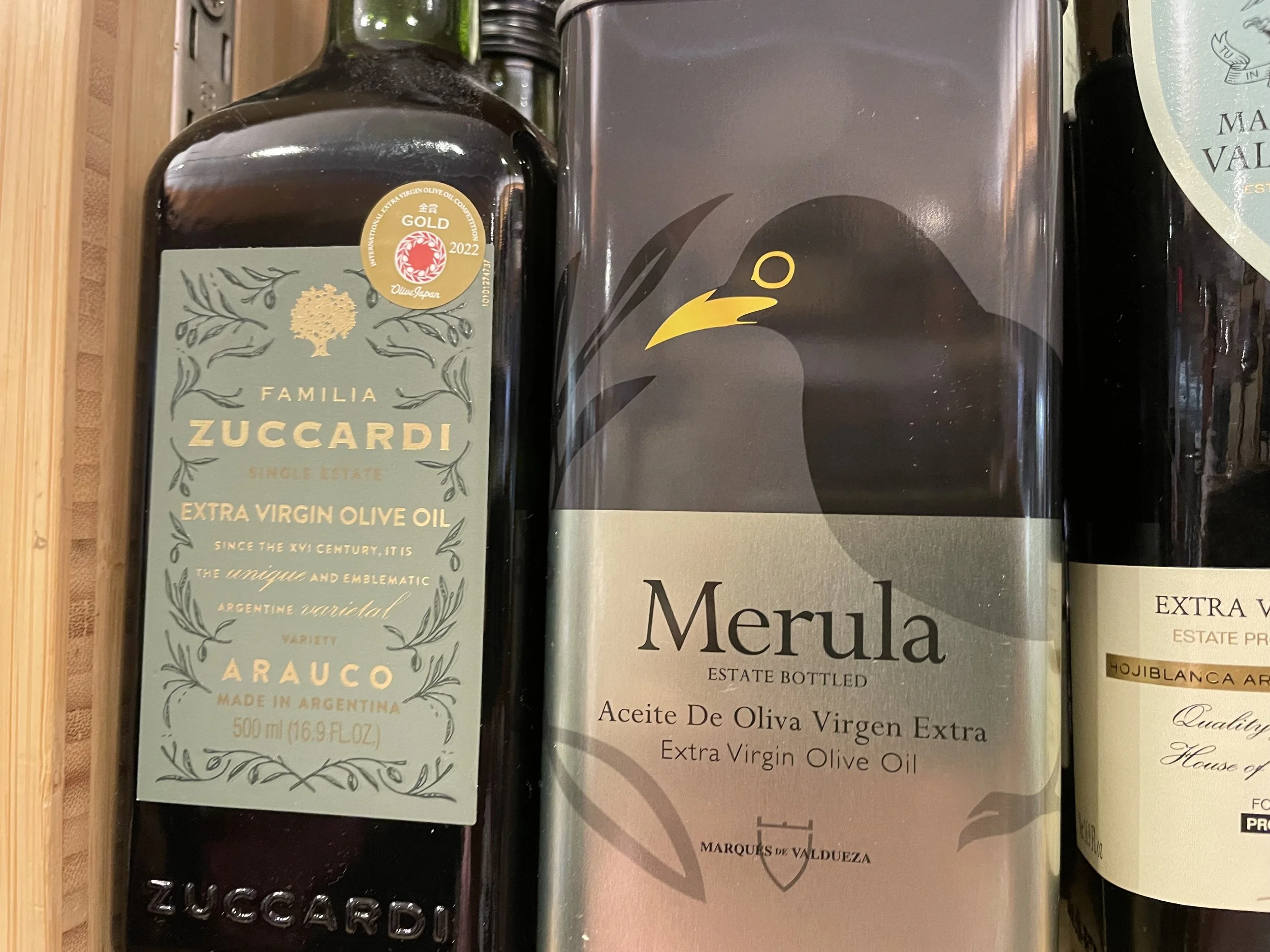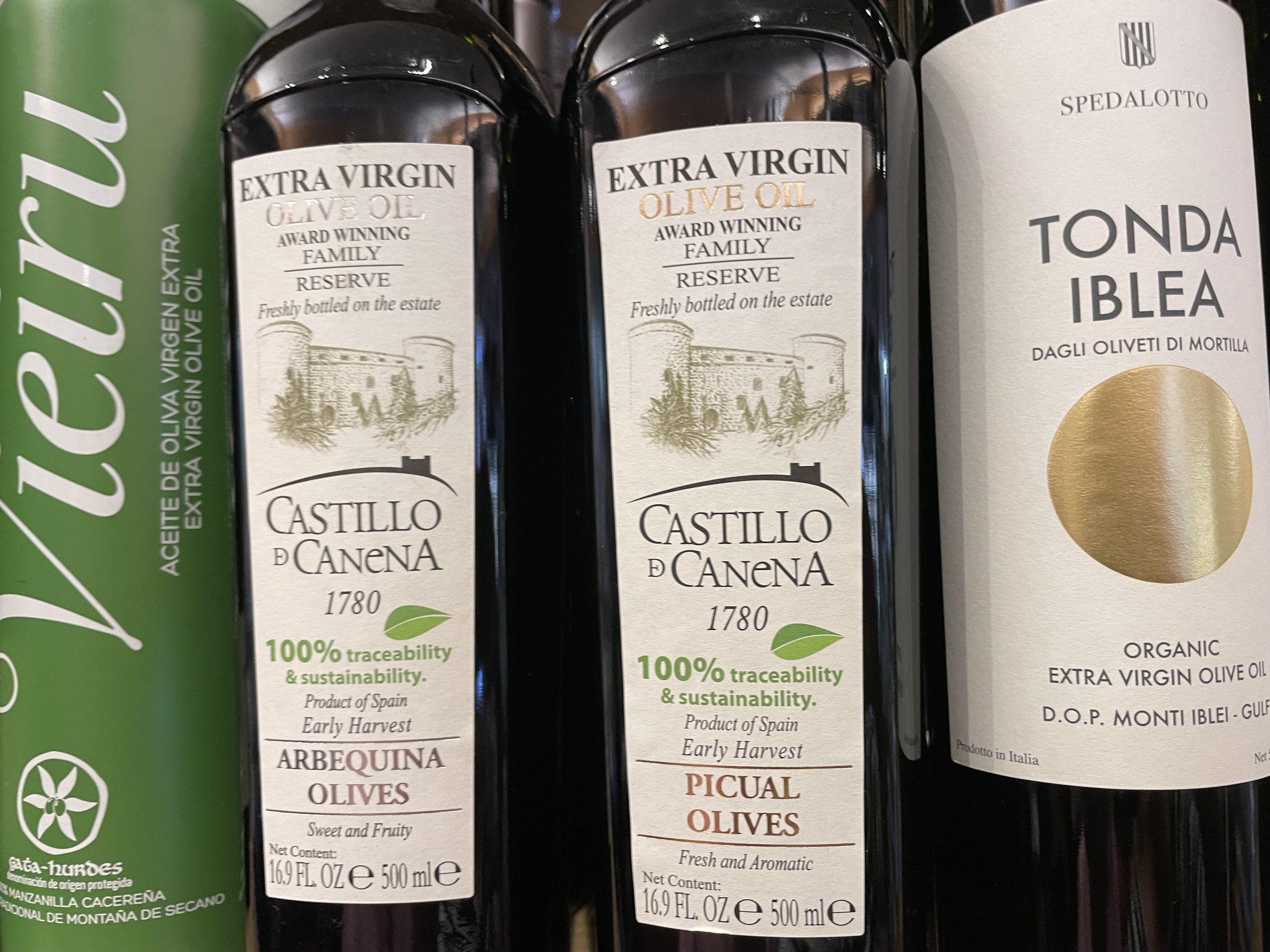How to Read an Olive Oil Label
The first time I thought deeply about olive oil labels was almost a decade ago, when I worked at Fairway Market. The olive oil section was prodigious, and part of my job was writing signs and material to communicate what set apart our hundreds of extra virgin olive oils.
The labels were everything from beautiful to barebones, minimalist to magnificent, and included text in all sorts of languages. I thought—if I worked in the industry and had trouble deciphering them, the task must feel overwhelming for customers trying to choose between a Cabeço das Nogueiras oil from Portugal and a Catalan Arbequina monocultivar. Where would they even begin?
Lori Jean Levy
Years later, olive oil bottles can still feel intimidating. I talked to Lori Levy, my former Fairway colleague and CEO of My Global Table, and Nicholas Coleman, founder of Grove and Vine about how to decode olive oil labels. Here’s where to start.
Olive oil dates
Freshness is Key
The fresher, the better. “The first thing I look for is the harvest date,” says Coleman. “Freshness is a key quality component.”
Olive oil is at its best in its first two years. With time, olive oil slowly but surely loses its beautiful, complex flavors and health benefits. “Buy smaller, not bigger. It’s always best to have fresher oil than oxidized oil,” Levy advises.
Olive oil harvests in the northern hemisphere (in countries like Greece, Spain, and Italy) take place in October and November. This means if you’re looking for the freshest bottle, you’ll want the harvest date listed on the label to be from the previous year.
A Pretty Label is Just a Pretty Label
Don’t judge a book by its cover. “Like wine, a fancy label can disguise,” says Levy. “So don’t be distracted from making decisions just on the front of the bottle.” Turn the bottle to the back, where the smaller print conveys crucial information.
Olive oils from Italy
Check the Region
Coleman says to “Look for a single estate or specific region where the olives originate.” Lesser quality oils often blend olives from all sorts of regions and countries. Like wine, the most delicious EVOOs celebrate the terroir of a specific place. Also like wine, there are excellent oils to be discovered from all sorts of places around the world. When I spoke to Coleman, he was on his way home from an olive oil sourcing trip to Chile. Spain, Italy, Greece, and Portugal produce quality EVOO, as do Tunisia, Australia, California, and beyond.
Levy urges customers to check if in oil was “packed, blended or otherwise processed somewhere other than where it was grown,” a piece of information that must appear on the bottle, legally (often in small print). That’s a sign of a lesser quality product.
Extra Virgin is Just the Start
Extra Virgin is the top tier of olive oil, and a great place to start. To be classified extra virgin, the oil must be extracted mechanically from olives, have an oleic acidity of less than 0.8%, and be free of defects, according to a tasting panel. Extra virgin olive oil is not chemically altered in any way. But EVOO doesn’t tell you much more than that about what’s inside the bottle. Even though it is the highest grade, the quality, aroma, flavor, color, and price can vary significantly from one bottle to another.
Know How You’re Going to Use Your EVOO
“There are Super Premium EVOOs, that really stand apart,” Levy explains. “They are more expensive to farm and produce and hence are costly.” Use these stunning oils for drizzling and finishing, so their flavors really shine through. Levy keeps at least two special EVOOs at hand, one delicate and one more robust in flavor to pair with different foods (olive oil should elevate, not overpower).
“Then there are the workhorses of your kitchen, the EVOO that can do a multitude of things from cooking to dressings and marinades,” explains Levy. She uses older oils she is trying to finish up for this purpose, or a less expensive bottle from a producer she trusts.
Olive oil bottle with cultivar on the label
Get to know your cultivars
Just as wine is made from different varieties of grapes, olive oil is made from different olive culitivars. The term monocultivar refers to an oil pressed from a single kind of olive—it’s not inherently better or worse, just a specific style. (More wine analogy—a Bordeaux is usually made from a blend of grapes, a Burgundy is exclusively Pinot Noir. Both are fabulous, and different.)
“Much like choosing wine, once you know some of the characteristics of the cultivars you like, you are able to find what you are looking for or something similar,” says Levy. “And you may start to explore new cultivars from different countries.” Also like wine, regions tend to plant specific olives, with their own flavor profiles. For example, the vast majority of Picual olives are grown in Jaén, in Andalusia, Spain, and tend to have a light peppery taste, fruity flavor, and a little bitterness. Originating in Tuscany, Frantoio olives produce an aromatic, slightly spicy oil, with notes of almonds and fresh herbs.
Tasting is the Best, Truest Way to Get to Know an olive Oil
Ultimately, let your own taste buds be your guide. If you love the flavor of an olive oil, that’s what matters. “Be sure to taste an oil, on its own and independent of other foods, in order to analyze its flavor profile,” says Coleman. “With eyes closed, listen to your palate.”








